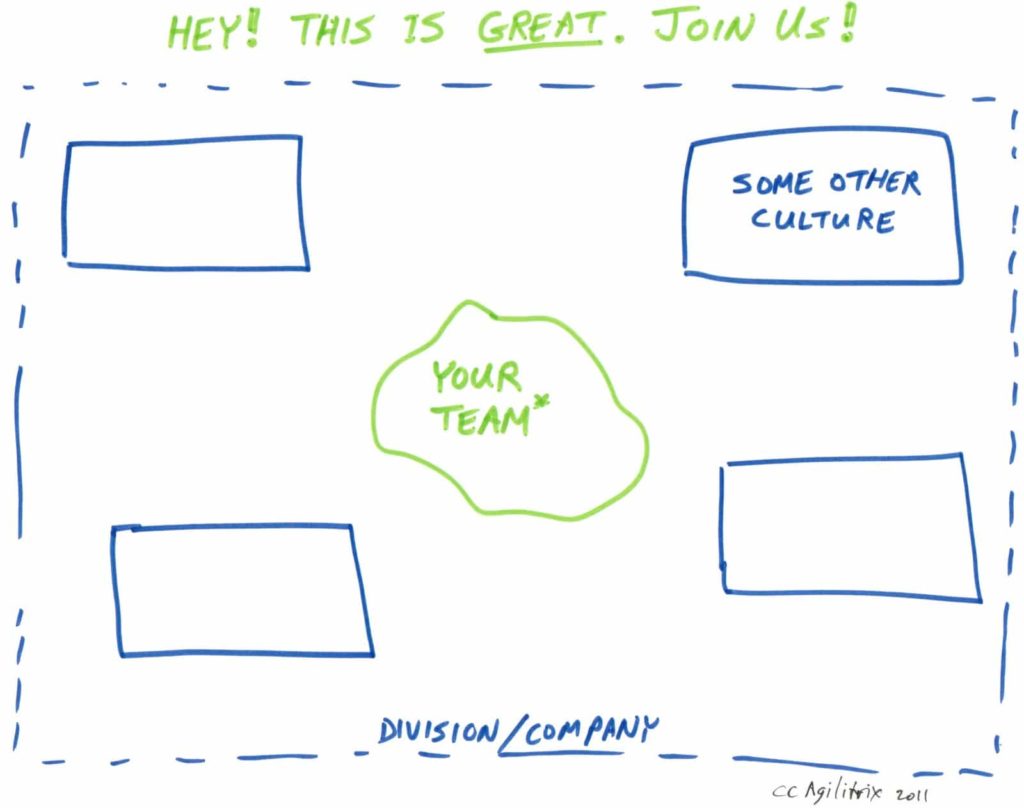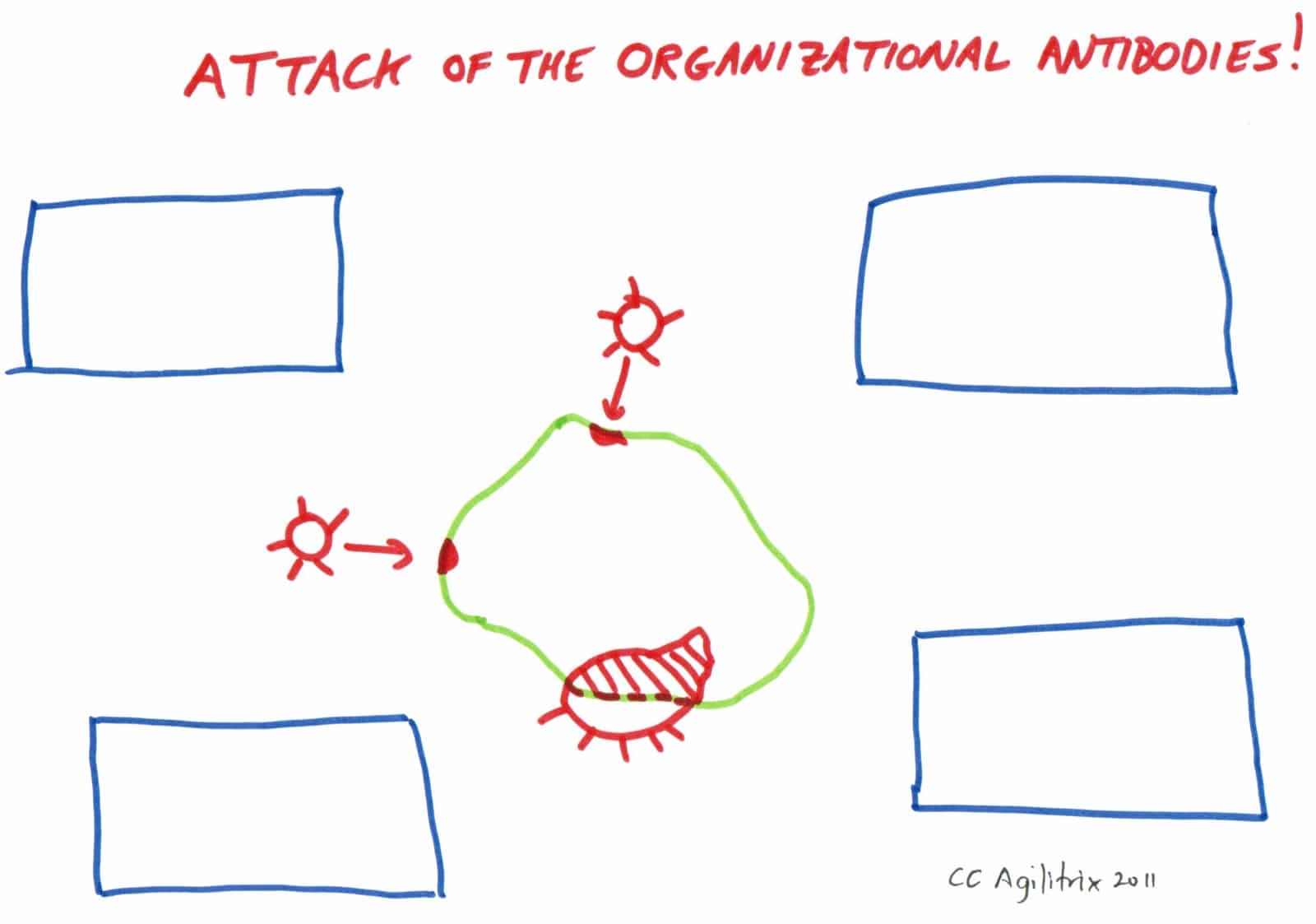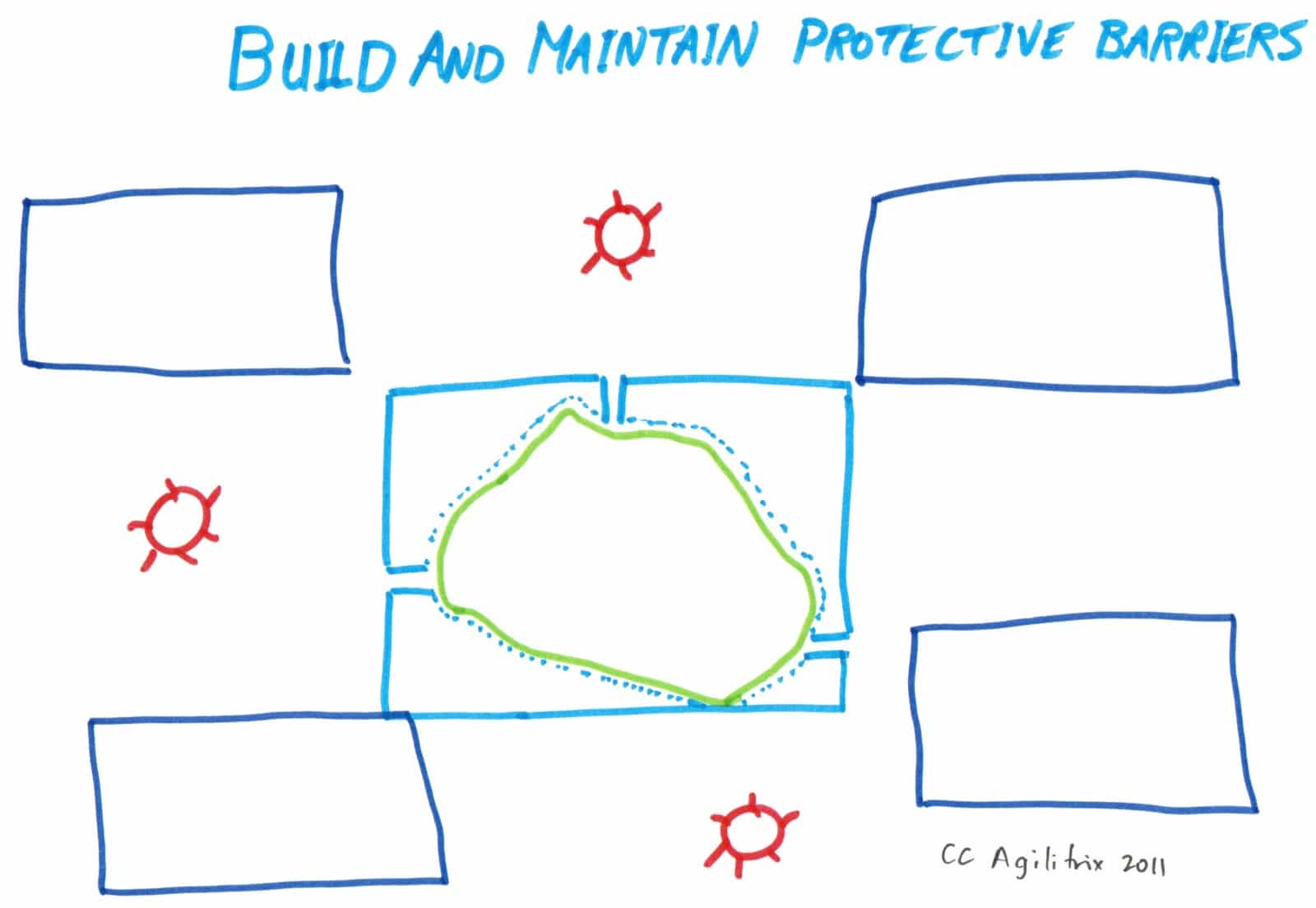The purpose of this post is to explain why building culture adapters around at team or group is a good idea. It is important for me to revisit this topic from my book and conference presentations since I have learned something new and wanted to share it. All but the last section is an excerpt from my book.
It is by now well known that Agile is a mindset and culture system and that it is incompatible with most organizational cultures.
Let’s talk about one way of moving forward with Agile – building adapters. This is an effective approach when the span of control and influence of the leadership does not cover the whole of the organization.
Start with A Successful Agile Team
A very powerful way to think about introducing a foreign culture such as Agile to an organization is through a cellular model. Consider a successful transformation of one team or group to Agile. This may have been a special pilot project with all the people keen to do Agile.
Imagine that the team is very excited about the new way of working. The team exists in the context of some other culture.

The team is not that excited about all of the organizational barriers and limits on productivity and success. So, what typically happens is they start to push back on the needs and requirements of other groups that are not adding value to the team and to the customers.
Attack of the Organizational Antibodies
The result sounds like a B-movie: “Attack of the Organizational Antibodies!” In the human body, we have antibodies (Killer T-Cells) that are designed to eliminate foreign elements to keep us healthy. In a similar way, organizations will react to the introduction of a foreign culture system such as Agile. These are the elements that work hard to preserve the status quo.

Build Culture Adapters
The movie doesn’t have to have a bad ending. One common pattern is to build adapters or translators around the foreign culture so that it fits within the overall culture. These are depicted in the diagram below as shapes surrounding and protecting the team. In this situation, the adapter allows the team to blend in with the overall organizational culture and avoid triggering the antibodies. It looks like this:

In practical terms, the adapter could take the form of a Microsoft Project Plan that has no value to the customers or team but is required by the organization. Another might be team use of a peer-based review for merit increases that still gets submitted by the manager since the system requires input only from her.
This sounds like a lot of effort! Is it worth it? The value is equal to the benefits derived from Agile less the cost of adapter maintenance. Assuming there is good value in the team’s new state of functioning, then sadly some of that productivity will be lost maintaining the adapters. But this is a much better situation to be in compared to getting attacked by organizational antibodies. The adapters are part of the cost of doing business. Like taxes.
Lean differentiates between different types of waste in organizations. Type I Muda (waste) are non value added tasks that are required at the current time. Type II Muda are non value added tasks that can be removed immediately. Maintaining the adapters is type I since the environment requires them.
The model above points a way to success with Agile transformation – it is possible to transform one team or group provided that care and attention is provided to satisfying the requirements of the larger organization. It is a feasible strategy to consider this a first step before a wider organizational change initiative.

THIS WILL EVENTUALLY FAIL!
The adapter strategy is not sustainable in the long term. Why? Eventually, the manager of this group is going to leave and a new manager will be selected. The new manager will typically be chosen to reflect the host organizational culture and will become a powerful attractor for the host culture. An then Agile gets dissolved or neutered. And the people who love working in this new way to deliver great products quit the organization and go work somewhere else.
At a number of conference presentations, I presented the arguement that no responsible manager should undertake using this pattern since it is ultimately doomed to failure. And this is my mistake. I was wrong. Sorry.
But that’s Good! (My New Insight)
I was at a client earlier this year and this topic came up. As I have been working very hard on supplicating and having compassion for the organizations I coach, I noticed something interesting. This particular organization was focussed on short term results and not long term results. (Yeah, I know this is a losing strategy but it’s their culture not mine). So, in the context of their organizational culture is was not only acceptable but highly desirable to do something that will work in the short run but fail in the longer term. So, if you are a manager in an organization that is fixed on short-term results, then the adapters are a truly great strategy to use with a clear conscience. Happy trails.


